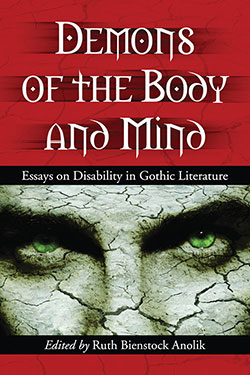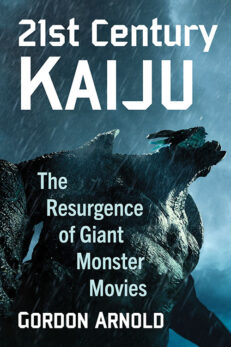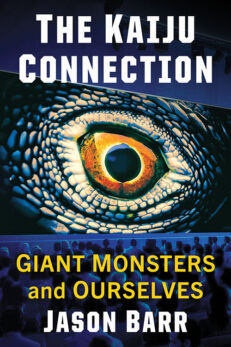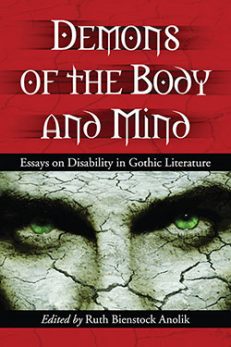Demons of the Body and Mind
Essays on Disability in Gothic Literature
$39.95
In stock
About the Book
The Gothic mode, typically preoccupied by questions of difference and otherness, consistently imagines the Other as a source of grotesque horror. The sixteen critical essays in this collection examine the ways in which those suffering from mental and physical ailments are refigured as Other, and how they are imagined to be monstrous. Together, the essays highlight the Gothic inclination to represent all ailments as visibly monstrous, even those, such as mental illness, which were invisible. Paradoxically, the Other also becomes a pitiful figure, often evoking empathy. This exploration of illness and disability represents a strong addition to Gothic studies.
About the Author(s)
Bibliographic Details
Edited by Ruth Bienstock Anolik
Format: softcover (6 x 9)
Pages: 244
Bibliographic Info: notes, bibliographies, index
Copyright Date: 2010
pISBN: 978-0-7864-3322-3
eISBN: 978-0-7864-5748-9
Imprint: McFarland
Table of Contents
Acknowledgments vii
Introduction: Diagnosing Demons: Creating and Disabling the Discourse of Difference in the Gothic Text
RUTH BIENSTOCK ANOLIK 1
PART I: MONSTROUS DEFORMITY: THE HORRIFYING SPECTACLE OF DIFFERENCE
A Space, a Place: Visions of a Disabled Community in Mary Shelley’s Frankenstein and The Last Man
PAUL MARCHBANKS 21
“Colossal Vices” and “Terrible Deformities” in George Lippard’s Gothic Nightmare
CYNTHIA HALL 35
Ominous Signs or False Clues? Difference and Deformity in Wilkie Collins’s Sensation Novels
TAMARA S. WAGNER 47
The Dangerous Mr. Casaubon: Gothic Husband and Gothic Monster in Middlemarch
ELIZABETH HALE 61
Folk Medicine, Cunning-Men and Superstition in Thomas Hardy’s “The Withered Arm”
SIMON J. WHITE 68
Lucas Malet’s Subversive Late-Gothic: Humanizing the Monster in The History of Sir Richard Calmady
CATHERINE DELYFER 80
Encounters with the Monster: Self-Haunting in Virginia Woolf ’s “Street Haunting”
TARA SURRY 97
PART II. VISIBLE SPECTERS: HORRIFYING REPRESENTATIONS OF INVISIBLE PATHOLOGY
Revising Ophelia: Representing Madwomen in Baillie’s Orra and Witchcraft
MELISSA WEHLER 110
The Case of the Malnourished Vampyre: The Perils of Passion in John Cleland’s Memoirs of a Coxcomb
CAROLYN D. WILLIAMS 119
“The Monster Vice”: Masturbation, Malady, and Monstrosity in Frankenstein
CHRISTINE M. CROCKETT 129
Invasion and Contagion: The Spectacle of the Diseased Indian in Poe’s “The Masque of the Red Death”
RUTH BIENSTOCK ANOLIK 142
Knights of the Seal: Mad Doctors and Maniacs in A.J.H. Duganne’s Romance of Reform
LISA M. HERMSEN 157
“The Secret of My Mother’s Madness”: Mary Elizabeth Braddon and Gothic Instability
CARLA T. KUNGL 170
“Don’t Look Now”: Disguised Danger and Disabled Women in Daphne du Maurier’s Macabre Tales
MARIA PURVES 181
Deviled Eggs: Teratogenesis and the Gynecological Gothic in the Cinema of Monstrous Birth
ANDREW SCAHILL 197
“Journeys into Lands of Silence”: The Wasp Factory and Mental Disorder
MARTYN COLEBROOK 217
Contributors 227
Index 231
Book Reviews & Awards
“Recommended”—Choice.





